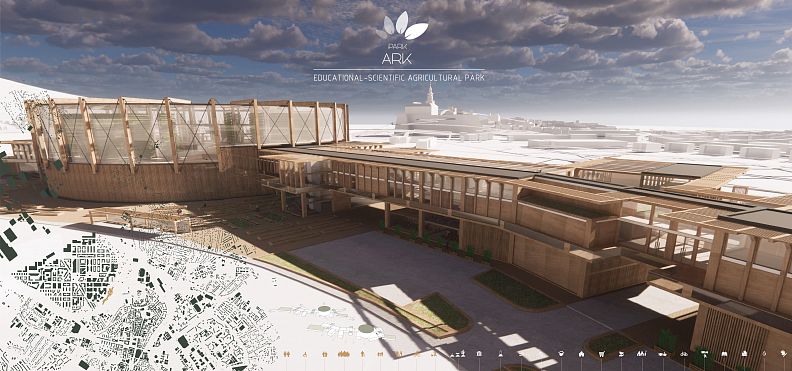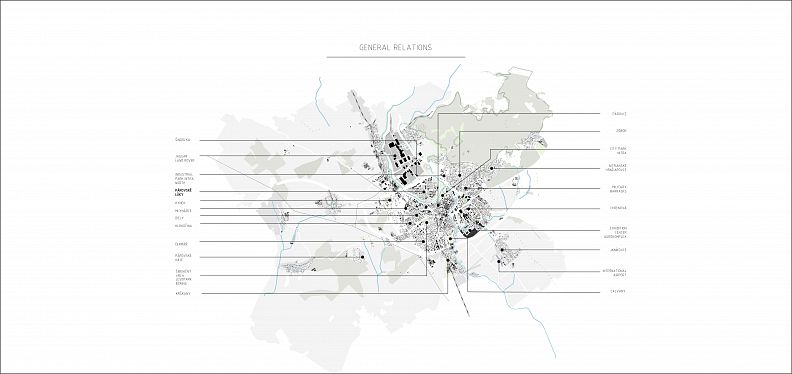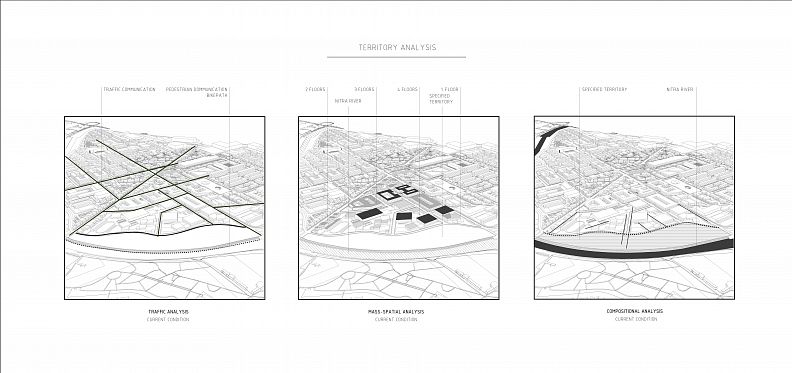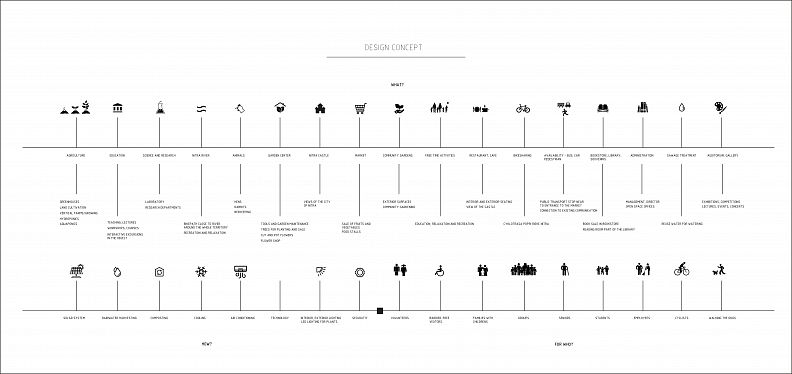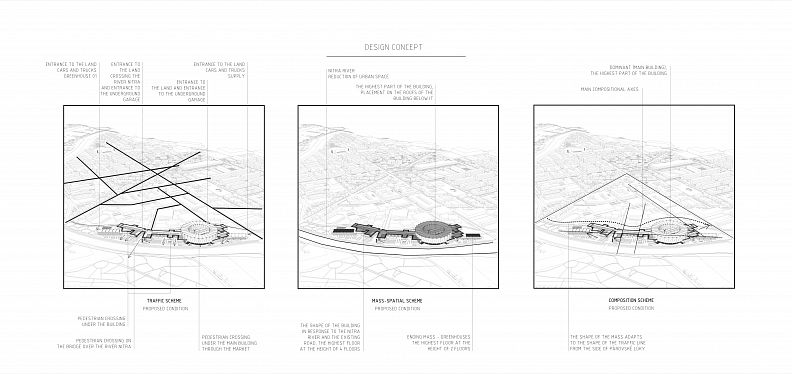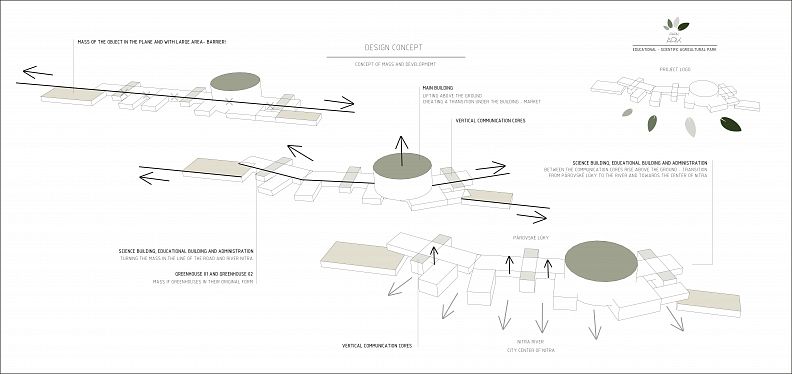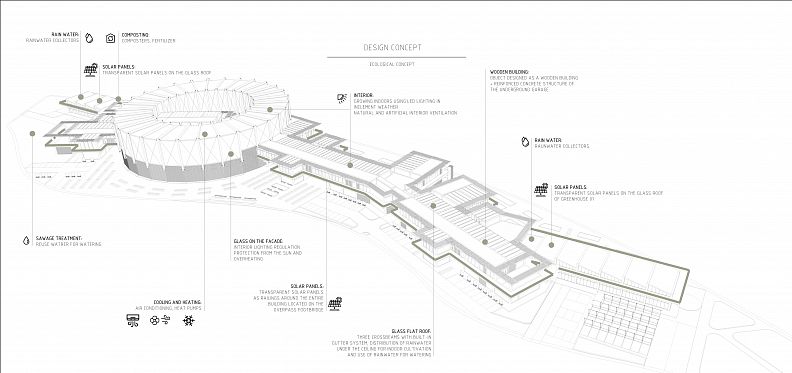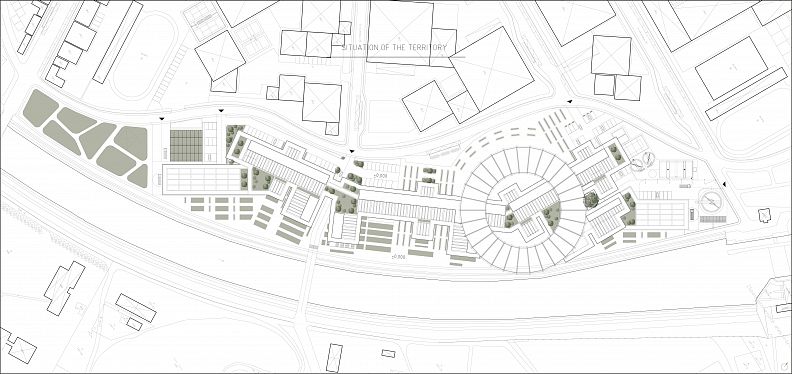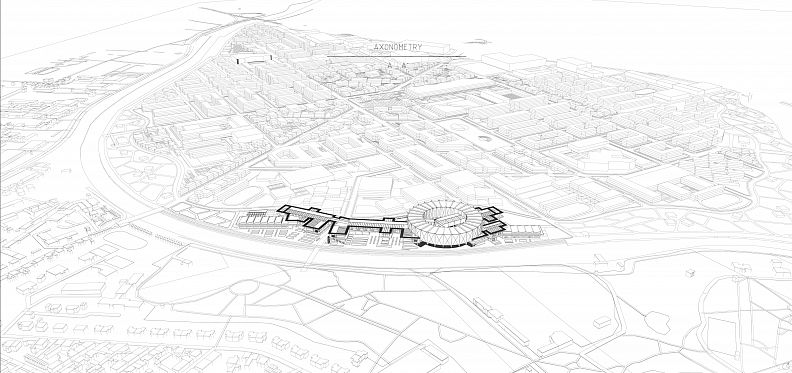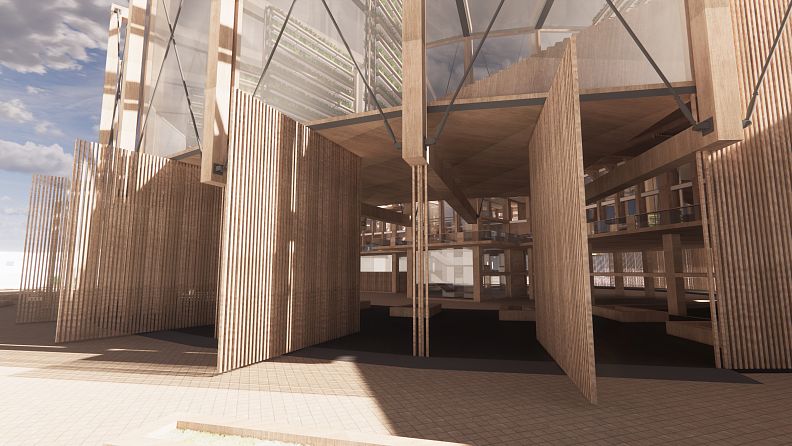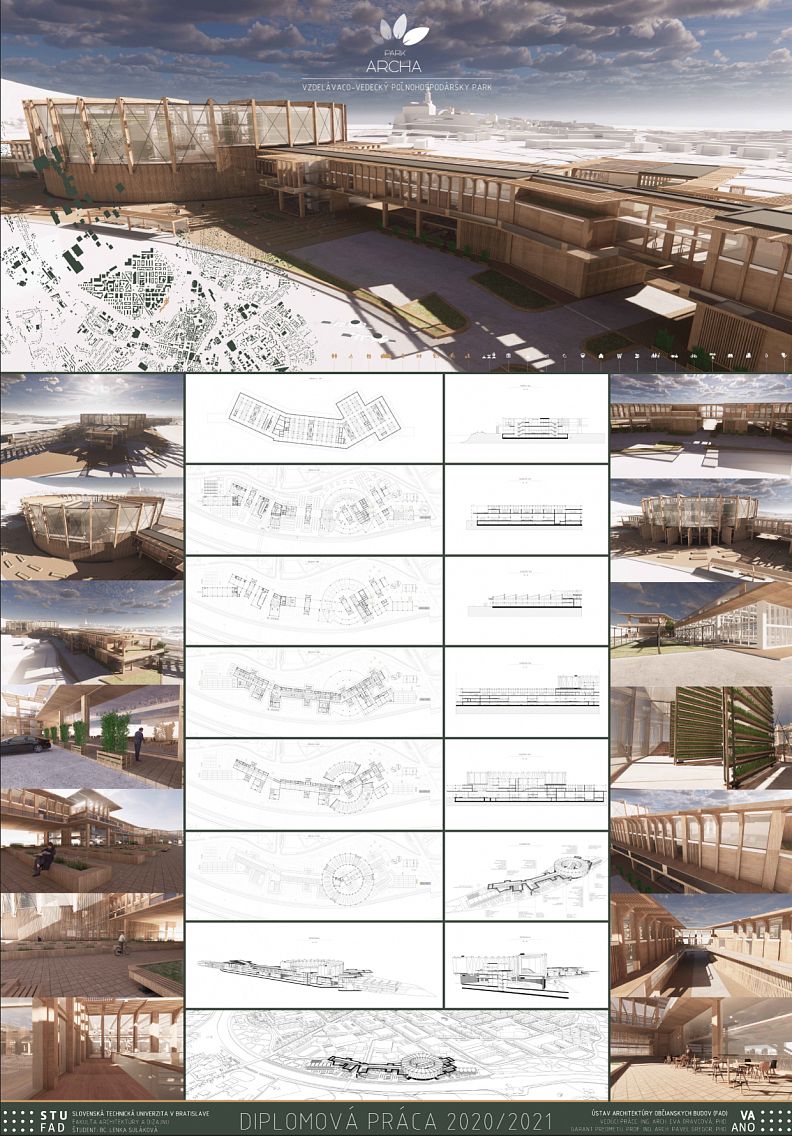iPark Ark - Educational-scientific agricultural park - Nitra

Project idea
The aim of my final diploma thesis on the topic of iPark Ark (Educational-Scientific Agricultural Park) was to design a civic building focused on education, science and agriculture. The proposed building is located in Slovakia, in the city of Nitra in the locality Párovské lúky. The solved area lies below Zobor in the meander of the Nitra river, northwest of the historic city center. The location of the building on the plot and its material and spatial solution results from the wider urban and spatial-compositional context. The location and proximity of the Nitra River determined the direction of my design and also the shape of the building itself, which responds to its surroundings. The layout and architectural solution of the building results from the character of the building and from the functional-operational ideology. The main idea of the project is to bring people closer to nature and cultivation itself. A space where the visitor will spend his free time and at the same time learn something. The building is primarily designed as a growing area, with the possibility of education, participation in various workshops and courses and development in the field of science and research. The project also includes various cultural and commercial establishments such as a restaurant, cafe, gallery or garden center, florist and much more that attracts visitors.
Project description
The main idea of the design was to create a building that will allow effective cultivation within urban planning, but will also be accessible to people with the opportunity to be part of this construction. The combination of three basic ideological functions into one object created spaces that fulfilled this idea. Education, science and agriculture in one building accessible to the general public. Intelligent and interactive cultivation excursions are part of the concept. Within its boxes 01 - 08, the educational building presents the development of cultivation, types, care and real contact with the cultivated plant in an educational way. The area with the solved land is located near the river, which separates it from the center of Nitra. One of the main ideas was to provide a connection for pedestrians, as well automobile across the river and connect the two sides of river. The mass of the proposed building adapted to this idea and, by jumping over the terrain, ensured the transition under the building. The development of the mass of the proposed building responds to the surrounding shapes and heights. From the side of Párovské lúky, the building adapts to the lines of the traffic road, on the opposite side it opens massively towards the river and offers various views, such as the Nitra Castle or Zobor. From the view towards the city center, the building is placed in height in the view and in the view it copies the urban development and the dominant feature of the town is the castle, where in the case of the proposed building the dominant building is the main building with vertical cultivation.
Technical information
The proposed building is a wooden building, which is composed of load-bearing wooden beams forming a modular system. The module is complemented by three visual beams, such as the finishing raster on the facade. The facade of the main building is mostly glass and is complemented by a wooden structure as a support, but also a visual solution of the facade. Transverse reinforcement is secured with steel ropes. The scientific building, the educational, the administration and also the other facades of the building stick to one thing
raster construction of wooden beams with glass panels, solid wall or a combination of glass and slats, which maintain privacy in the room in certain spaces. Structures outside the floor plan, such as a footbridge over the terrain at the height of the third floor, are complemented by a glass railing, which, in addition to a safety barrier, represents the function of solar panels.
Documentation
Show PDF 1Show PDF 2Show PDF 3Show PDF 4Show PDF 5Show PDF 6Show PDF 7Show PDF 8Show PDF 9Show PDF 10Show PDF 11Show PDF 12Show PDF 13Show PDF 14Show PDF 15Show PDF 16Show PDF 17Show PDF 18Show PDF 19Show PDF 20Show PDF 21Show PDF 22
